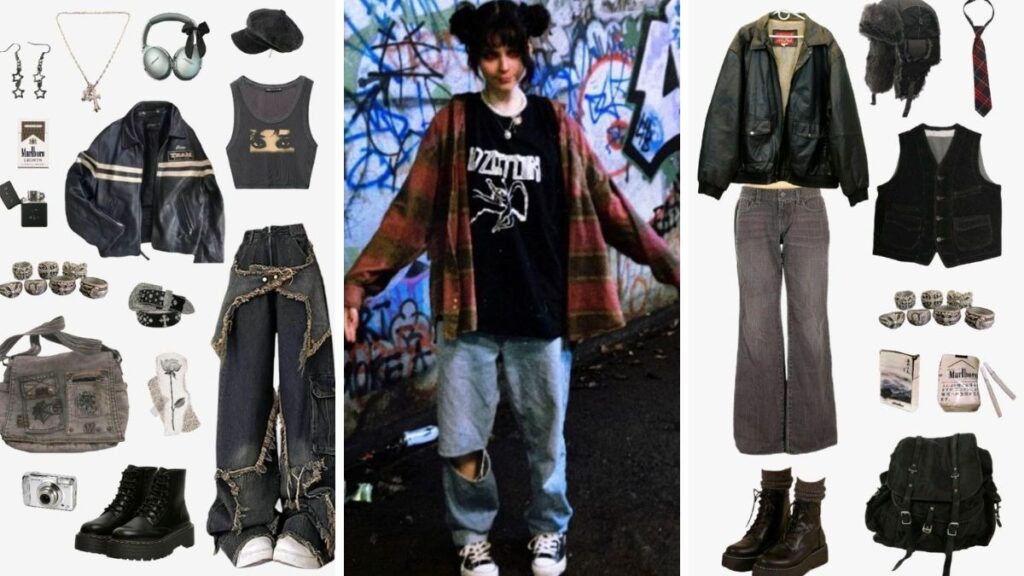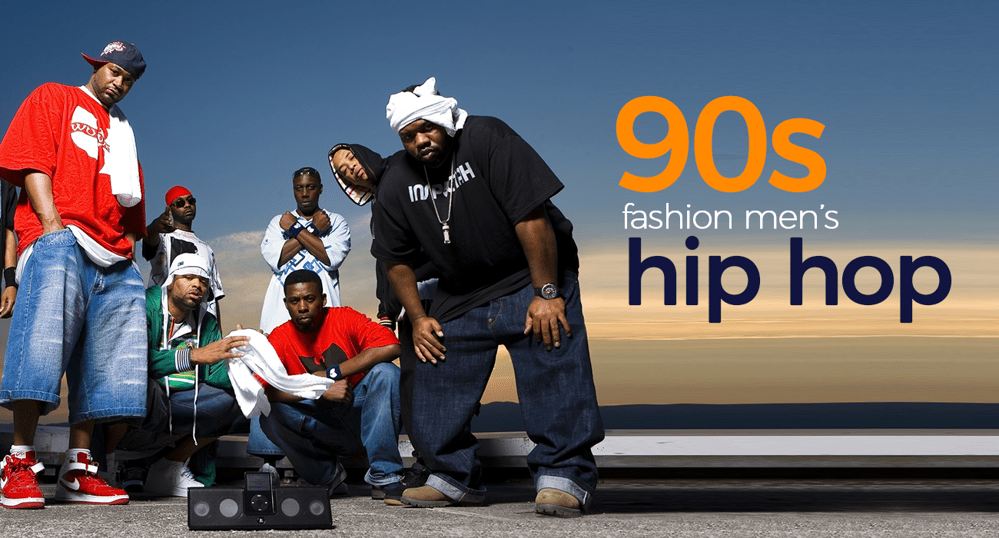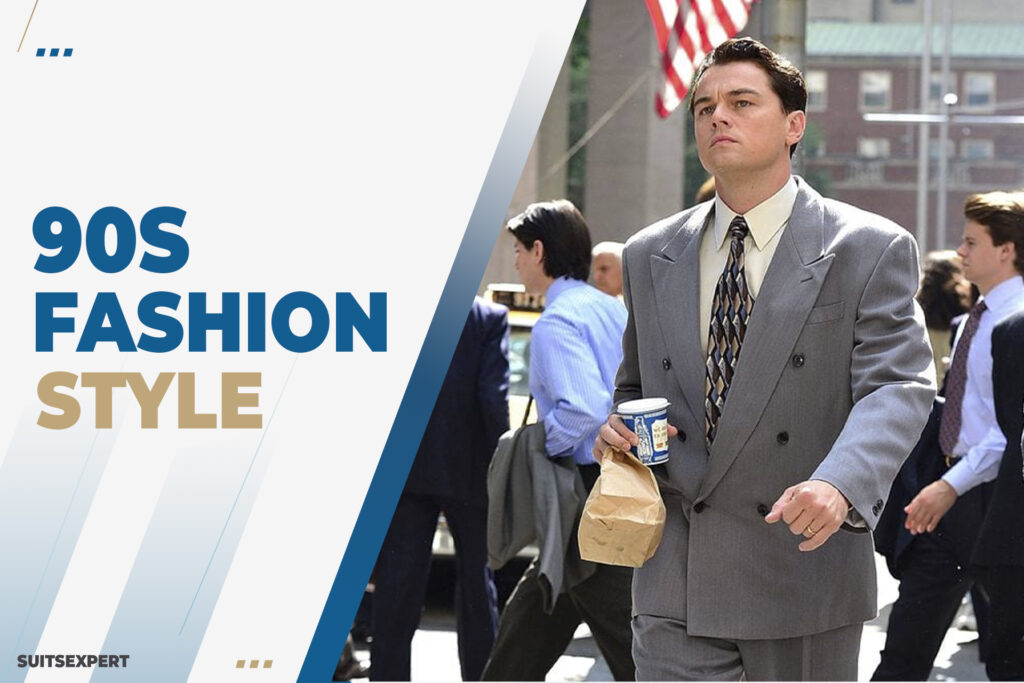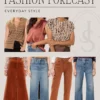90s fashion was all about bold colors, baggy jeans, flannel shirts, and iconic trends like chokers, crop tops, and platform sneakers.
Mold saw significant change in the 1990s, marked by a shift in social demeanor, a blend of tall and moo mold, and a focus on independence. Through the emergence of grunge and the rise of streetwear with hip-hop influences, people’s use of clothing to express themselves changed during the 1990s. Today, 90s design is experiencing a comeback as younger generations draw inspiration from the era while fans of the decade’s distinctive styles continue to embrace its infamous looks. This article will examine the main trends that defined the 90s mold for men, examining the ways in which specific subcultures influenced men’s fashion choices and the ways in which these trends are resurfacing in contemporary styles.
1. Grunge: The Anti-Fashion Movement

Grunge, a notorious design trend of the 1990s, became associated with the Seattle music scene thanks in large part to bands like Nirvana and Pearl Stick. Grunge was all about eschewing traditional notions of style in favor of a rougher, more raw aesthetic. It was influenced by punk shake and the counterculture movement of the 1970s, but it also had its own distinct twist, focusing on solace, finds at thrift stores, and a carefree attitude.
Key Pieces:
- Flannel Shirts: Wool shirts were a staple of the grunge look, worn open over band tees or tucked into torn pants.
- Ripped Jeans: Worried and baggy, torn pants served as a symbol of rebellion as well as an explanation for mold growth.
- Combat Boots and Converse: Footwear was roughly supportive and sturdy. Banter Chuck Taylors and Dr. Martens boots were wardrobe essentials.
- Oversized Sweaters: The clothing of the grunge movement was remarkably roomy, almost free-form, with sweaters frequently draped over shoulders or paired with flannel.
2. Hip-Hop Style: Streetwear Takes Over

Hip-hop’s influence on mold increased in the 1990s along with its massive ubiquity. During this period, streetwear emerged as a style that fused sportswear, luxury labels, eye-catching articulations, and urban culture. Hip-hop style was characterized by almost larger-than-life silhouettes, gaudy logos, and a strong sense of individuality. Artists such as Tupac and Infamous B. I. G. , and Jay-Z became style icons, spreading the trend. Baggy Pants: A relaxed and informal aesthetic was popularized by hip-hop designers through the use of loose-fitting pants that often hung loosely on the hips.
Key Pieces:
- Baggy Jeans: Made popular by Run-D and other rappers. M. C. matching Nike or Adidas tracksuits became a common sight in hip-hop culture.
- Tracksuits: Unmistakably worn were brand names such as Tommy Hilfiger, FUBU, and Calvin Klein, often in the form of larger-than-average logos on coats, t-shirts, and caps.
- Logos and Brands: Accessories like bandanas, bucket hats, and snapbacks were essential to the streetwear style.
- Bucket Hats and Snapbacks: Loose-fitting pants with a regular hang-me-down on the hips were the preferred look for hip-hop design.
3. Minimalism: The Clean and Understated Look
While the 1990s were characterized by larger-than-usual, graphic-heavy styles, moderation also became more popular in mold during the latter part of the decade. Designers such as Helmut Lang, Jil Sander, and Calvin Klein gained recognition for their simple, elegant designs with muted hues. All of the moderation was almost stripped-down elegance and subtle modernism, with a focus on premium materials rather than loud logos or decorations.

Key Pieces:
- Slip Dresses: The slip dress was a moderate mainstay for women, usually paired with simple accessories and worn in neutral hues.
- Tailored Suits: Men’s sharp, well-cut suits have become standard attire, replacing the immodest looks of the previous ten years.
- Basic Tees: A staple of moderate fashion was the basic white t-shirt, which was frequently paired with a jacket or tucked into high-waisted jeans.
- Neutral Tones: Moderate looks were overtaken by colors like dark, gray, white, and beige.
4. Techno and Rave Culture: Futuristic and Neon
With its emphasis on cutting edge, technicolor looks, the rave scene of the 1990s brought a completely diverse measurement to mold. The electronic music scene and the vibrant, high-energy rave parties held in underground clubs and stockrooms had an impact on this fashion. For the techno and rave crowd, neon colors, clever materials, and oddly large embellishments were standard.
Key Pieces:
- Neon Colors: Vibrant neon greens, pinks, and oranges prevailed over rave mold, which is frequently observed on oddly oversized t-shirts, hoodies, and trousers.
- PVC and Mesh: PVC, work, and metallic textures were among the materials used, giving rave looks a cutting edge.
- Platform Sneakers: Many people started wearing thick-soled stage tennis shoes, usually paired with tracksuits or socks of vibrant colors.
- Glow-in-the-Dark Accessories: In addition to the otherworldly air, extras like neon caps, gleam sticks, and shades were typical at raves.
- Link:https://www.vogue.com/article/90s-fashion-history
5. The Casual Revolution: Denim Everywhere
Although denim was a staple of 90s fashion, pants weren’t treated fairly. Denim dominated almost every aspect of both men’s and women’s closets in the 1990s. This texture was prevalent in everything from baggy pants to denim coats to full-on denim ensembles (commonly referred to as the “Canadian tuxedo”). It was adaptable, durable, and an essential component of both relaxed and aggressive road styles.
Key Pieces:
- Baggy Jeans: Curiously large t-shirts or wool shirts were often worn with loose-fitting denim pants that were slouchy on the hips.
- Denim Jackets: Throughout the 1990s, the timeless denim coat remained in style. For a more relaxed style, it was usually paired with cargo pants or worn over realistic tees.
- Denim Overalls: Overalls were a fun and practical item of 90s fashion, and they were a practical and comfortable option.
- Denim Skirts: The denim skirt was a mainstay for women, usually worn with chunky sneakers or knee-high boots.
6. Logomania: Branding as a Statement
In the 1990s, logos were everywhere. Wearing massive, robust, and frequently oddly large logos served as an explanation of status and fashion. Brands such as Reebok, Fila, Calvin Klein, and Tommy Hilfiger were spotted adorning coats, shoes, and t-shirts. Whether it was hip-hop, skate culture, or preppy chic, the idea of donning a brand’s emblem was nearly synonymous with a particular culture or way of life.
Key Pieces:
- Logo Tees: A mainstay of 90s fashion were t-shirts with large, instantly identifiable logos.
- Sweatshirts and Hoodies: Many of these emphasized large logos across the chest, referring to luxury mold labels or sportswear.
- Sneakers: . Shoes with logos, such as those made by Adidas and Nike, became highly sought-after and frequently worn to create a statement.
Conclusion: The Enduring Legacy of 90s Fashion
The 1990s were a vibrant decade for fashion, with trends ranging from the glitzy moderation of Calvin Klein to the rebellious grunge look. The streetwear culture of today, with its eye-catching logos, oddly large outlines, and easy coolness, was also established in the 1990s. Looking back at this era’s mold, it’s evident that it was an experimental decade that embraced individual expression and combined tall and moo design. Many of these 90s patterns are currently experiencing a comeback, proving that this decade’s design is timeless. The enduring influence of hip-hop fashion, the resurgence of grunge, or the return of loose pants are all examples of 90s design.



